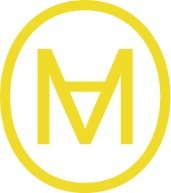How to Build Resilience and Extend the Benefits of the Kick Off
As we step into the new year, many ex-colleagues and leaders in multinational organisations are attending their annual Kick Off events. These gatherings, whether grand productions or smaller team-focused sessions, are vital moments to celebrate achievements, recognise high performers, and align teams with the year’s goals. While not every company operates on the same scale, the concept of taking time to deliver annual messages is universal and impactful.
When I served in a regional leadership role, I was responsible for organising these events, and I often found myself wondering: How long does that energy last? When teams inevitably face obstacles, would they recall the inspiring messages and maintain their momentum? Looking back, I realise that this was a question I should have explored further. Were we equipping our teams not just for the high of the Kick Off but for the highs and lows of the year?
A key question arises: What can leaders do after the Kick Off to sustain its impact? Resilience, the ability to bounce back from challenges and adapt to adversity, emerges as a critical factor. Without it, even the best Kick Off messages may fall flat when reality hits. As a resilience coach, I’ve seen how embedding resilience into leadership and team culture can transform a Kick Off from a single event into a lasting driver of success.
Here are three ways organisations can use the momentum of the Kick Off to build resilience that lasts throughout the year.
1. Model Resilience as Leaders
Leadership sets the tone for resilience across teams. After the Kick Off, leaders should:
Demonstrate transparency and adaptability: Share how they navigate challenges and setbacks, showing vulnerability and a solutions-focused mindset.
Foster psychological safety: Create environments where team members feel safe to voice concerns, take risks, and learn from mistakes.
Involve teams in problem-solving: Communicate openly about challenges the company or team faces and invite employees to contribute ideas.
2. Embed Resilience into Daily Routines
Resilience isn’t a one-time effort; it requires consistent reinforcement. Build it into daily operations by:
Encouraging reflection: Start team meetings with quick check-ins to discuss what’s working, what’s challenging, and how to improve.
Focusing on incremental wins: Break big goals into smaller milestones to provide frequent opportunities for celebration and adjustment.
Providing practical tools: Offer workshops or resources on stress management, adaptability, and effective decision-making under pressure.
3. Invest in Well-Being as a Foundation for Resilience
Personal well-being directly impacts professional resilience. Ensure that employees have access to resources that help them thrive:
Promote balance: Encourage time off, manageable workloads, and flexible scheduling where possible.
Support mental health: Offer programs such as counselling, mindfulness sessions, or resilience coaching.
Proactively address burnout: Train managers to recognise stress signals and take early action to support their teams.
Conclusion
Looking back, as much as it was great to stand on a stage, seeing the hyped faces and feeling the excitement of the energy generated at a Kick Off, I can’t help but wonder: if I knew then what I know now, would success have been easier to achieve? Perhaps if I had given more attention to embedding resilience and creating structures to sustain the momentum, the path might have been smoother.
Resilience is the bridge between the highs of the Kick Off and sustained success throughout the year. By equipping teams with the tools, support, and culture needed to adapt and thrive, organisations can ensure that the energy and inspiration from the event translate into meaningful, lasting impact.

